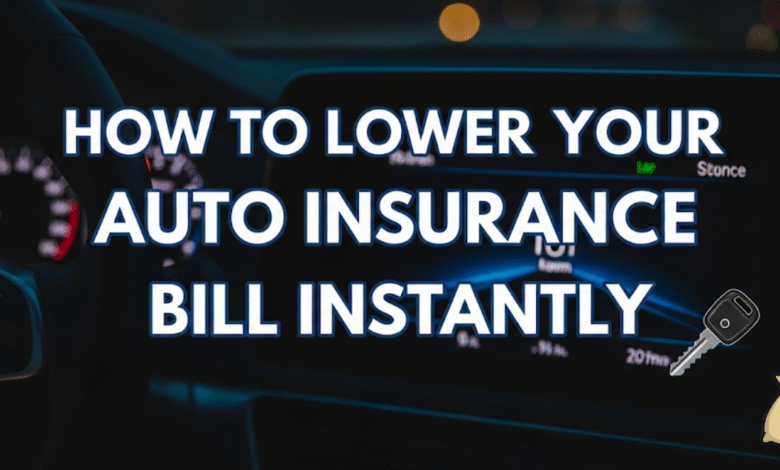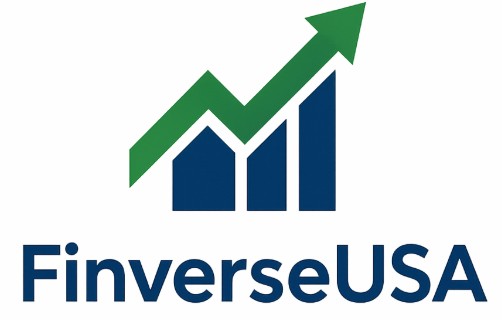
Car insurance is a necessary evil, a monthly premium you pay to be allowed to drive your car on the open road that can drain your pocketbook. The good news? You don’t have to resign yourself to sky-high rates. Follow these strategies to reduce your car insurance bills today without losing on the coverage you want.
The average American now spends about $1,424 a year on car insurance, but some pay far more than that, while others pay less. Whether you’re a first-time driver who is staring down high rates or a seasoned motorist looking to trim costs, this guide shares 12 actionable ways to immediately reduce your car-insurance bill.
Why Your Auto Insurance Is So Expensive
First, before we look at ways to save on those hefty premiums, let’s look at why they are so high. Your rates are determined by insurance companies pricing the risk they can’t do anything about — your age, location and driving history — as well as stuff you can: the car you drive, changes in life circumstances and how you drive.
Your insurer examines dozens of factors while figuring out your rate. Some negatives are working against you (for example, you live in an area with a high crime rate), while others can work in your favor (for example, if you have more than one policy with one carrier). The trick is to maximize what you can control and shop smart for coverage.
Quick Wins: Save Money in an Hour
Shop Around Every Six Months
Most drivers have stuck with one auto company for years, overpaying in the process. Insurance rates are constantly in flux, and what was a competitive product last year could be an overpriced one this year.
Remind yourself on your calendar to ask for quotes from three different companies every six months. Comparing online can take the hassle out of this. Even if you don’t change, competing quotes can give you bargaining power when you negotiate with your current service provider.
Pro Tip: Request quotes on the same day so you can be sure you are comparing current rates. Pricing is adjusted by insurance companies with some frequency, even daily.
Raise Your Deductible Strategically
Your deductible is the amount you have to pay when something happens before insurance covers the bill, and changing it can make a big dent in your premium. Raising your deductible from $250 to $500 can shave 15-25% off your premium. Leaping to $1,000 can save even more.
Here’s the math: If upping your deductible saves you $200 a year, you can pay for that in 3.75 years — even if you file a single claim. That’s because most drivers go more than a year between claims, so this trade-off pays off for most people.
Safety Net Strategy: Put away the money you save in a dedicated “deductible fund” so you are ready in case you need to make a claim.
Bundle Your Policies
Insurance carriers love policyholders who bring them more than one line of business. By combining your auto insurance with your home, renters, or life insurance, you can usually receive some reduction, often 5-25%, off your total premiums.
And while each of the individual policies might be a few dollars more with one carrier, the bundle discount often makes the total package less expensive. And you’ll only have to deal with one company for claims and customer service.
| Policy Combination | Average Savings |
|---|---|
| Auto + Home | 15 – 25% |
| Auto + Renters | 5 – 15% |
| Auto + Life | 5 – 10% |
| Auto + Multiple Vehicles | 10 – 20% |
Maximize Your Discounts
Safe Driver Discounts That Really Save You Money
Insurance providers have all sorts of discounts for safe driving, but you need to know how to earn them and keep them.
Good Driver Discount: Maintain a driving record free of accidents and violations for 3-5 years (depending on company) and get 10-30% off your premium. Subsequent violations, even minor ones knock you out, so if you get a recent ticket consider a defensive driving class.
Low Mileage Discount: If you drive fewer than 12,000 miles a year, they offer a 5-15% discount. Work from home? Retired? This discount could be substantial. Some insurers now also offer usage-based programs that monitor your real mileage for even deeper discounts.
Telematics Programs: These “spy box” or smartphone app programs track your driving behaviors. Drive around safely, and you could save 10-30%. The catch? Bad driving habits could lead to an increase in your rates.
Student and Age-Related Savings
Good Student Discount: Students with a B average or better that are enrolled full time and are under 25 may receive a 5-25% discount on their parents’ policy. This discount tends to last through college, and sometimes through graduate school.
Driver Education Discounts: Young drivers have an opportunity to save between 5 and 15 percent on their insurance premiums if they take an approved driver education class. Defensive driving courses can not only help decrease your rates by removing points off your license, but even the most skilled driver can learn something from these classes.
Senior Discounts: Older drivers (55-plus) often qualify for a discount after taking a senior driver improvement course.
Professional and Membership Discounts
There are group rates available for most vocations. 5-15% off premiums for teachers, engineers, military personnel and government workers. Don’t forget to ask about:
- Alumni association discounts
- Credit union member rates
- Professional organization discounts
- Employer group rates
Smart Coverage Adjustments
Drop Coverage You Don’t Need
Collision and Comprehensive on Old Cars: If your vehicle is valued at less than $3,000, full-coverage insurance might not be in your financial interest. The “10 times rule” advises dropping such coverages when the annual premium is above 10% of your car’s value.
Rental Car Coverage: If you have other means of getting around, or your credit card covers rentals, you might avoid adding this $20-40 feature to your policy every year.
Gap Insurance: Gap insurance sold through your car dealer or bank is generally more expensive than adding gap coverage to your regular auto insurance policy.
Right-Size Your Liability Limits
Do not automatically select minimum liability limits — they could be insufficient and not offer much in the way of savings. But you don’t want anything too excessive, either.
Recommended Minimums:
- $100,000 per person / $300,000 per accident for bodily injury
- $100,000 for property damage
Higher limits are relatively inexpensive and offer essential protection if you cause a major accident.
Vehicle-Specific Strategies
Choose Insurance-Friendly Cars
Your next car can make a big difference in your insurance rates. Before purchasing, check insurance rates on any car you’re considering. Factors that affect rates include:
Safety Ratings: The safer the car, the less expensive it is to insure because it better protects occupants in a crash.
Theft Rates: Cars that are commonly stolen (such as certain Honda and Toyota models) are also more expensive to insure.
Repair Costs: Comprehensive and collision premiums get boosted by luxury cars and those with expensive parts.
Engine: Sports cars with powerful big engines mean higher premiums for insurance.
Anti-Theft and Safety Discounts
Advanced safety features can save you on premiums:
- Anti-theft devices: Car alarms, immobilizers and GPS trackers will get you a 5-15% discount
- Antilock brakes: Mandatory in most current cars, a discount of 5 percent to 10 percent
- Airbags: With more than one airbag, you can save 10% to 15% on claims
- Daytime running lights: Auto on/off decreases your chance of an accident
Geographic and Timing Factors
Location Is More Important Than You Think
Where you park your car at night is a major rate-influencer. The more crime and accidents in an urban area, the more it costs. If you are moving, consider the cost of insurance in your decision.
Money-Saving Move: Just a few miles across town in another zip code can impact your rates. If you are moving, be sure to get quotes when you determine where you will be living.
Timing Your Policy Changes
Pay Annually and Save: Pay annually instead of monthly and save 5-10%. If the annual payment is not in line with your budget, you can choose semi-annual payments as a middle option.
Timing on Renewing: You don’t have to wait until your policy expires to shop around. Begin the application process 30-45 days in advance to prevent a coverage lapse and give yourself time to compare options without rushing.
Advanced Money-Saving Techniques
Credit Score Optimization
In a majority of states, insurance companies factor in credit scores to set rates. A driver with excellent credit can pay hundreds of dollars a year less than one with poor credit — sometimes more than 50% less for the same coverage.
Quick Credit Improvements:
- Pay off credit card balances below 30% of the limits
- Enroll in automatic payments to prevent missing payment deadlines
- Review your credit report, and file a dispute for errors
- Keep old accounts open to lengthen credit history
Usage-Based Insurance Programs
These programs monitor your driving, including when and where you drive, as well as how you drive, via smartphone apps or plug-in devices. Good drivers can save 10-30%, but the programs aren’t for everyone.
Best Candidates for Usage-Based Programs:
- Low-mileage drivers
- Commuters that don’t drive during morning or evening rush hour
- People who don’t drive late at night
- Safe, reserved drivers who do not brake or accelerate harshly
Red Flags and Common Mistakes
Avoid These Costly Errors
Lapsing Coverage: Even one missed day can jack up your rates for months or years. Insurance companies see lapsed coverage as high risk behavior.
Concealing Information: If you don’t inform your insurer about car accidents, traffic tickets, or other household members, you can end up without coverage just when you need it.
Opting for the Bare Minimum: As much as you may want to save money, bare minimum coverage is a quick way to leave yourself vulnerable in car accidents.
Failing to Review Annually: Life changes – marriage, new cars, job changes, moves – all have an effect on your insurance needs and rates.

Making the Switch: What You Need to Know
How To Make The Transition To A New Insurance Company Easier
Switching insurance companies can be a hassle, but it’s not as hard as it might sound with a little advance planning:
- Get New Quotes: Compare rates and quotes from multiple companies
- Time It Right: Have the new policy begin one day after the current one ends
- Cancel Correctly: Send your old company a written notice to prevent auto renewal
- Update Everyone: Tell your lender, DMV and anyone else who requires proof of insurance
What Should You Ask Prospective Insurance Companies
- What discounts can I get?
- What’s your procedure for filing claims in my area?
- What’s included in roadside assistance?
- Will rates change in the near future?
- What if I need to file a claim?
Technology and Modern Solutions
Digital Tools for Better Rates
Comparison Sites: Use more than one comparison site as not all insurers will be participating on all of them.
Insurance Company Apps: A number of insurers have their own apps that provide app-only discounts or other features to help lower your rates.
Discounts for Digital Payments: A few companies will give you a modest price break if you establish automatic payments or forgo receiving a paper bill.
Long-Term Strategies for Lower Rates
Build Your Insurance Profile
A loyal insurance company may give discounts for low mileage and no accident record. Over time:
- Don’t let your coverage gap or expire
- Keep your driving record as clean as possible
- Look into loyalty discounts — your existing insurance provider may offer you a loyalty discount
- Establish relationships with local agents who can negotiate rates on your behalf
Plan for Major Life Changes
Certain life events can significantly affect your insurance rates:
Marriage: Rates are generally lower due to married driver statistics
Vehicle Purchase: Can get you multi-policy discounts
Kids Getting Licensed: They usually cost less when added to your policy rather than getting their own
Retirement: A combination of lower mileage and senior discounts lower the rates
Frequently Asked Questions
How frequently should I shop for auto insurance?
Even if you’re happy with your current provider, shop for new rates every 6 to 12 months. Insurance rates fluctuate frequently, and what was reasonably priced in the past may be a bit too costly today. Schedule a reminder to get quotes from at least three companies once a year.
If I file a claim, will my rates increase?
Not all claims drive your rates higher. Comprehensive claims like theft, vandalism, and weather damage tend not to impact your premiums if you weren’t at fault. At-fault accidents, in particular, as well as multiple claims within a short amount of time are more likely to drive up your rates. A few insurers offer “accident forgiveness” on that first at-fault accident.
Should I get quotes if my credit is bad?
Absolutely. Although bad credit typically results in higher insurance rates, each insurer treats low credit differently. Some insurers place greater emphasis on driving record and other factors. Plus some states ban credit scores from being used as part of insurance pricing, so it’s even more worth it to shop around.
How much money can bundling policies save you?
Bundling usually saves anywhere from 5-25% off your total premiums, varying by insurance company and which policies you’re combining. The biggest discounts on average tend to come from combining auto and homeowners insurance. And even if any one of your individual policies are slightly more expensive with one company, the bundle discount often makes the total package cheaper.
Do online insurance companies rate as highly as traditional ones?
Many of the online-only insurance companies have great coverage, and really competitive pricing. The key is finding out who has the right financial strength ratings, best customer service reviews and good claims handling. In fact, some online carriers offer better customer service through digital tools and 24/7 chat support than traditional companies that have limited office hours.
Should I drop collision and comprehensive coverage on an older car?
You might want to drop full coverage when your car’s value is $3,000 or lower or your annual premium is 10% or more of the car’s value. On the other hand, consider your financial circumstances: if you couldn’t pay cash to replace the car, it’s worth it to keep the coverage.
How do usage-based insurance programs actually work?
These use smartphone apps or plug-in devices to check your driving habits, such as speed, braking, how you accelerate, what time of day you drive and total mileage. Good drivers may see a 10-30% discount, but if you drive aggressively, at night, or high mileage, your rates could go up. Most programs offer a discount just for enrolling.
How can I lower my rate most quickly right now?
The fastest savings typically come from raising your deductible, dropping unnecessary coverage or claiming discounts for which you qualify but have not asked. Before you shop around, give your current insurance company a call to review your policy and inquire about all the discounts available to you.
Take Action Today
You don’t need to compromise on coverage or accept an unreliable company in order to lower your auto insurance. Start with the quick wins — get quotes from three competitors, review what coverage you really need and inquire about discounts you may be missing.
Good value insurance isn’t always the cheapest. Focus on what works best for your unique needs — the right balance of coverage, customer service and price. With this approach, the majority of people can save hundreds of dollars a year and still get quality protection.
Your car insurance doesn’t have to break your budget. Take control of your rates now with these tested techniques. Your wallet will thank you, and you can drive confidently knowing you’re getting great coverage at a fair price.

